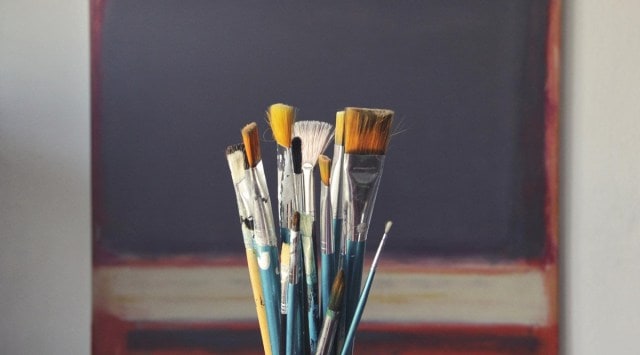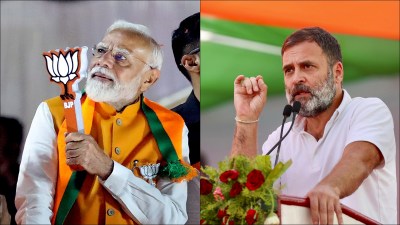- India
- International
Sam Gilliam ‘took a step most people didn’t understand was possible’
Sam Gilliam and his work left a deep impact on his fellow artists and friends.
 "But that was the nature of Sam’s work: It always questioned space,: says Melvin Edward (Pixaby)
"But that was the nature of Sam’s work: It always questioned space,: says Melvin Edward (Pixaby)By Ted Loos
(An Appraisal)
When painter Sam Gilliam died last weekend at age 88, he left behind pioneering artworks, particularly his draped canvases stained with blooms of color that forever changed the way the world would conceive of a painting. But he also left a more personal legacy: his impact on fellow artists and friends.
Sculptor Melvin Edwards, 85, was a friend of Gilliam’s for more than 50 years, forming a tight trio with painter William T. Williams. Edwards and Gilliam owned each other’s work and interrogated each other endlessly about process, sometimes talking three or four times a day.
“We were always asking why the other had done something a certain way,” said Edwards, perhaps best known for his “Lynch Fragments” and barbed-wire series. “But that was the nature of Sam’s work: It always questioned space.”
Multimedia artist Rashid Johnson, 44, got to know Gilliam a decade ago and saw the older maker as a mentor and role model.

“I knew his work far before we met, and he had so much influence on me,” said Johnson, who has made his name with plant-filled installations and abstract, pandemic-era anxiety drawings. “He’s been informing my life since I was in my late teens.”
Just two days after Gilliam’s death, Edwards and Johnson talked about how they are processing his life and work, his decision to stay in Washington, D.C., and his success in being his own best critic, in a conversation that has been edited and condensed.
Q: How do you look now at Sam’s signature move — taking the canvas off the wall and draping it, which he said was partly inspired by laundry hanging on clotheslines?
MELVIN EDWARDS: Sam was a very fine painter who was curious and experimental. Thinking about the surfaces art was made on didn’t start with Sam — but he took a step most people didn’t understand was possible. Sam took the step. He got seen the right way by some people who were paying attention to that kind of thing, and they immediately blessed it.
Often fellow artists are pretty quick to recognize the implications of style and possible significance. One of the earliest things I did involved suspended elements of steel and chains. When Sam and I showed together at the Studio Museum in Harlem [in a landmark 1969 show], I was doing the first of the barbed wire pieces of mine, some of which were wall-attached, some of which were suspended. And we almost took it for granted that we were both taking steps.
Q: So there were these eddies and echoes between you, right?
EDWARDS: Look, it’s all a visual art, it’s not about labeling. It’s either up or down or left or right. For me and most artists, it’s like having a baby. When you’re having sex you’re not thinking about what you name the baby.
Q: Rashid, what were the entry points for you with Sam’s work?
RASHID JOHNSON: There are a lot, but the most significant is his relationship to improvisation, his ability to respond in real time with gesture, mark-making and decision-making in a way that is in line with America’s greatest art form and most ambitious innovation: jazz music. We spoke about that. Just watching Sam explore with an honest and radical sense of self. That radicality was attached to improvisation and innovation.
Q: What innovations in particular?
JOHNSON: His bevels to me are as ambitious an innovation as the manumission of the canvas from the stretcher. [Gilliam’s “Beveled-Edge” or “Slice” paintings, a series that began in the late 1960s, were made on beveled-edge stretchers that projected off the wall.] I think there’s something really significant in that work.
Q: Mel, do you agree?
EDWARDS: You didn’t have to know which way it was going to go with Sam. The pieces were supported in a variety of ways. For instance, in the recent show at Pace [featuring Edwards and Williams], the sawhorses he used were a perfect foil for Sam, spreading his work out horizontally. It had a human scale, whereas the other pieces in that exhibition took us straight to the ceiling.
Q: Rashid, you have talked about the decision of a Black artist in the 1960s and 1970s to work abstractly and not directly depict Blackness in representational, or figurative, terms — and how that lives on for you.
JOHNSON: That was a decision, and it’s a fool’s errand to pretend that’s not true. Sam and artists like Sam, who chose abstraction as a vehicle and saw it as a way forward, were as conscious of the fact that they were not including the Black body and thematic Black concerns. I thank those folks. It wasn’t always rewarding in the typical ways.
Q: When I interviewed him in 2018 and asked him about whether being Black had held back his career, he answered both yes and no, and he was not interested in cleaning up the contradiction.
JOHNSON: Honestly, I love it, and I see a lot of truth in both answers. White Western history often does a great job of centering itself. For me, as a young artist, Sam Gilliam was important. Mel, Ed Clark, William T. Williams, these were heroes to me. And the fact that they weren’t as ambitiously represented in some of the cultural institutions was no hindrance on how I saw the world.
EDWARDS: People think that stuff written about white people is what we have to aspire to as being significant. The art world has its ways of looking at things and has its ways of educating us so that often, we limit our thinking. Sam, ultimately, didn’t get limited by that stuff.
Q: I know it’s so soon after his passing, but what is his key legacy?
JOHNSON: I feel joyous about the life that he lived and excited about the impact he had on so many of us. For me it’s the cycles in his life and career — the fact that he continued to work and continued to make things that didn’t just complement his legacy, but added to it. I know that some people will cite his early breakthroughs, but I think in the last three years he’s provided us with what may be as ambitious a body of work as he’s ever made, honestly. That part matters. This guy really kept going.
EDWARDS: I’m just happy that Sam was Sam, doing what he felt he wanted to do. He always kept that attitude. You could fill the whole New York Times with just Sam, and forget the rest. That’s my emotional take on my friend. He was happy his work got more attention and more finance came his way, but it was a hell of a struggle. He always wanted to do the work, and he did it until he couldn’t.
📣 For more lifestyle news, follow us on Instagram | Twitter | Facebook and don’t miss out on the latest updates!
More Lifestyle
Apr 25: Latest News
- 01
- 02
- 03
- 04
- 05




































